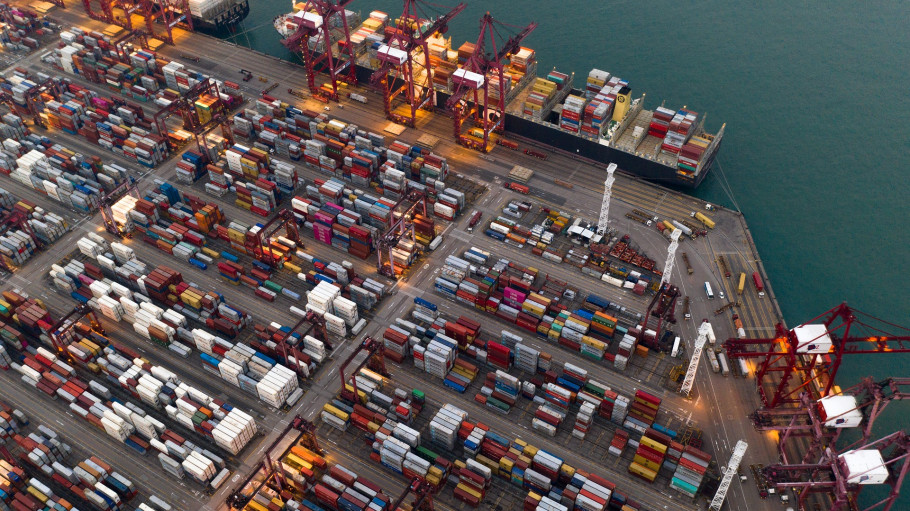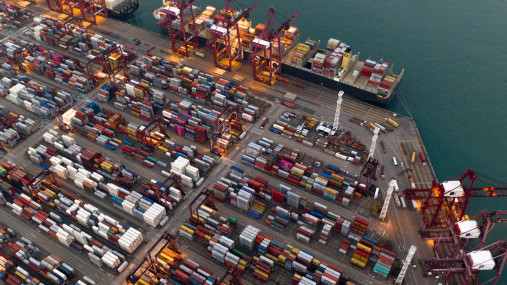
Press releases » Full year 2020 data show gradual return to growth as EU COVID measures recede
Full year 2020 data show gradual return to growth as EU COVID measures recede
Downloads and links
Recent updates

Brussels, 06 May 2021 – The COVID-19 pandemic slashed steel consumption forecasts and the overall economic outlook across the EU. Shutdown measures implemented by governments that began in earnest in March 2020 severely impacted manufacturing activity and steel-using industrial sectors. However, some of the measures that had the greatest impact on the economy were loosened as of June 2020, and data show initial steps towards a return to growth in the second half of the year.
“This full year data confirms what we already knew: that 2020 was one of the worst years ever for the European steel industry, including the largest fall on record in the second quarter”, said Axel Eggert, Director General of the European Steel Association (EUROFER). “However, the data also shows that there is a rebound underway, which is a first positive sign”.
The whole year 2020 was, as expected, considerably impacted by the pandemic and saw apparent steel consumption in the EU plummet (-11.1%). It is set to rebound (+11.7%) in 2021, and to grow more moderately (+4.9%) in 2022, when it is expected to return above 2017 levels thanks to continued improvement in demand from steel-using sectors.
EU28 apparent steel consumption increased (+3.3%) year-on-year in the fourth quarter of 2020. This is the first quarterly growth since the fourth quarter of 2019, after the drop (-10.4%) recorded over the third quarter (that followed the unprecedented drop (-25%) in the second quarter). Apparent steel consumption in the fourth quarter amounted to 35.2 million tonnes.
Mirroring the improvement in demand, EU domestic deliveries in the in the fourth quarter of 2020 increased (+4.5%, after -6.8% recorded in the previous quarter). However, overall domestic deliveries fell (-9.7) over the full year.
Data for the fourth quarter also showed the continued downturn in imports from third countries. After the severe drop (-25%) in the third quarter of 2020, imports from third countries dropped – albeit less severely - also in the fourth quarter of 2020, with a year-on-year fall (-7%), that is the eighth consecutive quarterly drop.
Total production activity in steel-using sectors fell (-10.4%) over the full year 2020.
The second quarter saw a sharp fall in steel-using industrial output (-25%), linked to industrial stoppages caused by the COVID pandemic. The third quarter also saw a decline (-6.7%) as did the fourth quarter (-1.9%). This is the fifth consecutive quarterly decline.
The COVID-19 outbreak further hit EU industrial sectors at a time when these had already been experiencing a severe downturn and were coping with serious challenges. Over the course of 2019, business conditions in the manufacturing industry had continued to deteriorate.
This downward trend gained speed in the second half of 2019, particularly in the automotive industry. This resulted in a pronounced slowdown in output growth in steel-using sectors, which then culminated in unprecedented drops over the second quarter 2020, mainly as a result of the severe lockdown measures imposed by governments in March and April 2020.
The second quarter marked the trough of the industrial recession. The loosening of lockdown measures over the third quarter allowed industrial activity to restart, with a considerable rebound in output compared to the record lows seen in the preceding quarter. However, industrial activity remained around low levels in historical terms and still exposed to fragility and risks. As a result, despite the quarter-on -quarter rebound, output fell year-on-year (-6.7%) in the third quarter.
In the fourth quarter of 2020 industrial output all over the EU recorded a considerable second consecutive quarter-on-quarter rebound, driven by faster-than-expected recovery in output in some sectors (domestic appliances and automotive in particular). Steel-using sectors’ output growth over the fourth quarter was still negative (-1.9%), i.e. the fifth consecutive quarterly drop, but at a much lower rate than the third quarter (-6.7%).
This could pave the way for a stronger acceleration in industrial recovery over the first quarter of 2021, despite persistent economic uncertainty.
Contact
Charles de Lusignan, Spokesperson and Head of Communications, +32 2 738 79 35, (charles@eurofer.be)
About the European Steel Association (EUROFER)
EUROFER AISBL is located in Brussels and was founded in 1976. It represents the entirety of steel production in the European Union. EUROFER members are steel companies and national steel federations throughout the EU. The major steel companies and national steel federations in Switzerland and Turkey are associate members.
The European Steel Association is recorded in the EU transparency register: 93038071152-83.
About the European steel industry
The European steel industry is a world leader in innovation and environmental sustainability. It has a turnover of around €170 billion and directly employs 330,000 highly-skilled people, producing on average 160 million tonnes of steel per year. More than 500 steel production sites across 22 EU Member States provide direct and indirect employment to millions more European citizens. Closely integrated with Europe’s manufacturing and construction industries, steel is the backbone for development, growth and employment in Europe.
Steel is the most versatile industrial material in the world. The thousands of different grades and types of steel developed by the industry make the modern world possible. Steel is 100% recyclable and therefore is a fundamental part of the circular economy. As a basic engineering material, steel is also an essential factor in the development and deployment of innovative, CO2-mitigating technologies, improving resource efficiency and fostering sustainable development in Europe.

Download files or visit links related to this content
How global overcapacity is destroying European industries
European Steel in Figures 2025 is EUROFER's statistical handbook, laying out in an easy-to-use format the key statistics and data about the performance and footprint of one of Europe's most important strategic sectors
A snapshot of Europe’s steel industry in motion, with EUROFER at the forefront in a time of policy shifts and global uncertainty